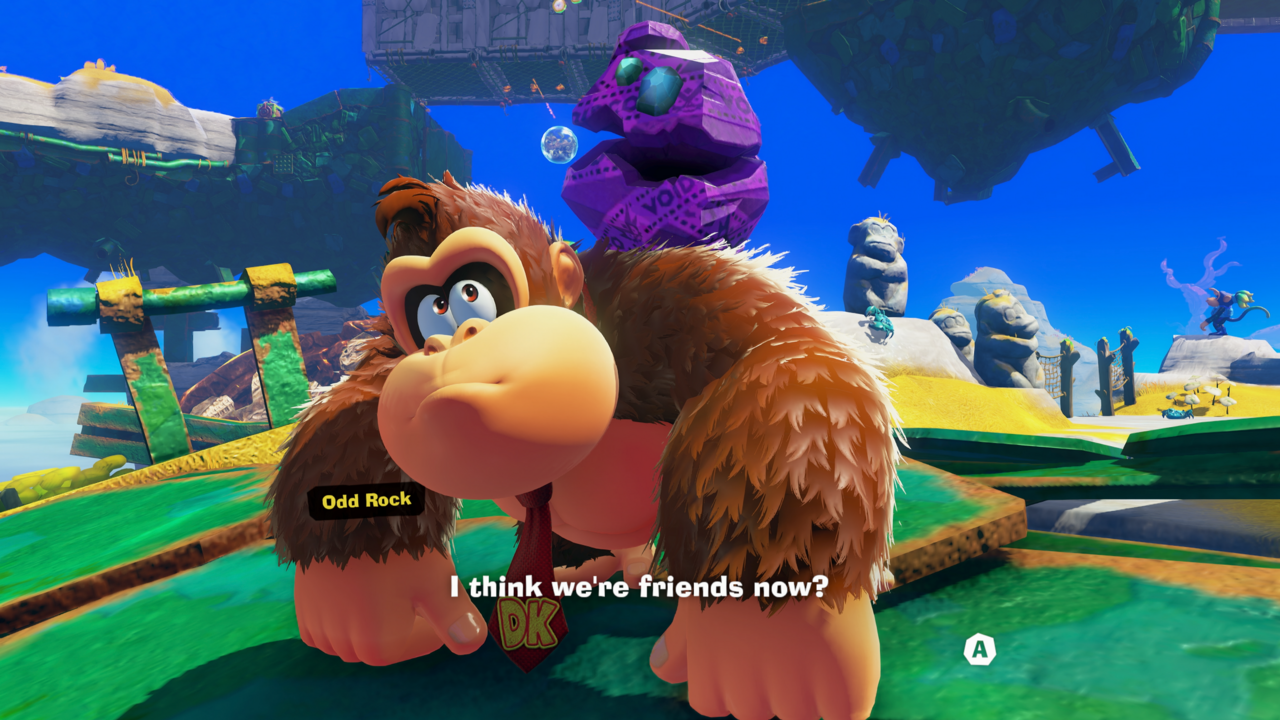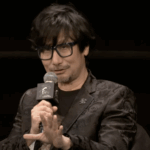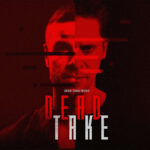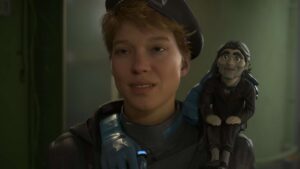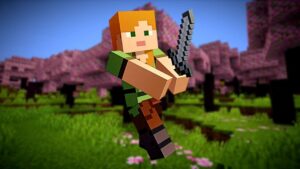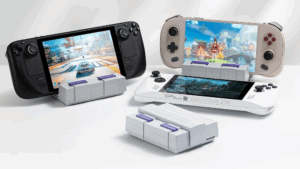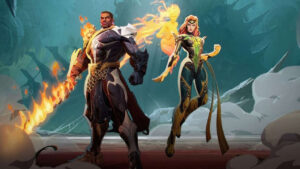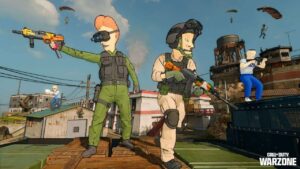Donkey Kong Bananza has so many wild aspects going for it–the terrain deformation, the Kong transformations, the tween Pauline sidekick–that it’s easy to overlook the basics. This is a new 3D platformer from the team behind Super Mario Odyssey, arguably one of the best of its genre. It’s hard to see how those disparate elements come together from a distance, but an extended hands-on showed me how all the pieces gel together to make a new experience that feels like a next step for the Odyssey team, and even reminiscent in some ways of 3D platforming’s earliest roots on the Nintendo 64.
The comparison to N64 platforming roots struck me as I explored the final biome of my hands-on session, a woodland area surrounded by a poison lake. This was one of many sublevels in Bananza, but each layer of the hollow earth that serves as its setting is its own standalone stage. When you jumped into a painting in Super Mario 64 or landed in a new kingdom in Super Mario Odyssey, you were presented with an open world in miniature–each with its own threats and rules and mechanics. There was always a joy to finding the contours of each space and learning it inside and out.
Donkey Kong Bananza looks like it is carrying forward this design philosophy with new layers, in a very literal sense. The story revolves around burrowing deeper into the planet’s core as DK and his companion Pauline search for the power to make a wish. Stages are built around deformable terrain that DK can shape by punching his way forward, downward, or upward, digging through solid rock to uncover secrets or open new paths. The stages are built as large, bespoke hubs, and after completing the story objective, you open an entrance to a deeper layer. Each environment is packed with secrets to uncover and elements to explore, and then you burrow deeper into the world’s crust and start familiarizing yourself with the next.
Building an environment rich with secrets and things to do while also centering around terrain deformation might seem like a contradiction in terms, but Nintendo has found clever ways to gate your progress so that you can’t simply punch your way through every problem. Some materials are too tough for even the mighty Donkey Kong and require explosive materials to penetrate, while other times, challenges might revolve around climbing upwards, riding mine carts, or following a trail of corrupted (and hard-as-steel, impenetrable) land back to its source to destroy it and open sealed passageways. The woodland area even had its own mechanic in which you could throw seeds at any wooded surface to create a vine bridge to cross gaps. Kong can not only destroy; he can also build.
Gallery
There’s something so satisfying about the tink-tink-tink of gold that pops up as you dig through solid rock, and DK has a ground-slap move that quickly gathers it all for you. That currency is then used to pay a small penalty if you die, or for a simple base-building mechanic. Each biome has a little domicile you can carve into the rock for a small fee, and the more you build in an area, the bigger a health benefit you’ll get from taking a nap there. These segments are also a good chance to see DK and Pauline bond, as there are voiced dialogue scenes from Pauline as the pair settles into sleep. It’s nothing too serious or story-vital; just the kinds of random slice-of-life things kids talk about when they’re getting tired. It’s very cute.
Bananza’s freeform approach makes each environment its own little playground of mechanics to explore, lands to destroy, bases to build, and things to find. Large crystalline bananas are often buried deep in the rock, with subtle visual cues that prompt you to dig in the right direction. Finding a set number of bananas grants you a skill point to upgrade Kong’s abilities, like a charge punch.
The creativity that you can apply to exploring the environment also goes for combat. Sure, some enemies will fall to your basic punches, but others will need you to chuck a hunk of rock at them, or destroy their armor with an explosive, or even punch one enemy into another. At one point I faced a boss–an encounter with Grumpy Kong–and accidentally burrowed slightly beneath him and then punched upwards at his unarmored underside. And it worked! I was excited to find that this weird, probably-not-intended approach was rewarded.
There are also minecart segments, showcased in the Nintendo Direct presentation, but the ones I saw weren’t sidescrolling throwbacks as seen during the stream. They were fully 3D with camera control, and at one point, the minecart circled around an armored enemy as I chucked bombs to dismantle it. It felt like a respectful homage to similar segments in classic DK games, while also doing something new with the idea. Similarly, there are optional battle segments to earn extra bananas, which weren’t terribly difficult but provided a change of pace from exploring.
If all this makes the experience sound deadly serious, don’t worry. Nintendo emphasized during a short presentation that silliness is considered one of DK’s core character traits, and that shines through in everything from the story presentation, to the power-ups, to DK himself. To give you some idea, the Elder Kong who teaches you about Bananza transformations (the game’s namesake) is a massive monkey who also mentions that he’s an aspiring DJ. You unlock your first ability by fetching a record for his turntable, which prompts an extended, affably goofy musical number from Pauline. And it’s Pauline’s singing that actually activates your transformations when you’ve gathered enough energy.
Collecting gold is not just currency, as it also charges your Bananza transformations–wild animal-themed super-abilities that change DK’s appearance and temporarily give him a specialized suite of powers. The preview demo included two such transformations. The first, the Kong Bananza, turns DK into a hulking silverback gorilla, complete with a banana headdress that looks inspired by Dragon Ball’s Super Saiyans. It essentially turns him into the Incredible Hulk of the Kong world, strong enough to punch through harder materials, and much more destructive. The other, the Ostrich Bananza, can be described only as an ostrich who got swole as hell. It’s still recognizably DK, with his massive gorilla muscles, but also vaguely ostrich-like thanks to a beak. His feathers are just his fingers splayed out wide and then supplemented with an array of bananas. I laughed aloud seeing it for the first time, and was that much more motivated to find crystal bananas in Ostrich form so that I could see him strike a pose.
As you might suspect, the ostrich form specializes in fluttering across gaps, and can be upgraded to a glide once you run out of flutter energy. Each Bananza transformation has its own upgrade path. While those were limited to only a few nodes during my preview session, they may expand further as you progress through the game–either way, it looked like there is lots of room to upgrade both Kong and all of his special transformations, which is more than enough motivation to explore every environment to its fullest and find every banana.
And even in a lengthy hands-on preview session, it felt like I was only scratching the surface. This was only a few of what looks to be many more layers in the full game, and each one is its own open environment to explore. I didn’t have time to wring all the secrets and surprises out of any of the layers in my limited time, but they were all full of playful new mechanics and ideas.
Donkey Kong games have always been solid and sometimes even fantastic platformers, but they’ve rarely felt so ambitious. Donkey Kong Bananza appears to be massive in scope, with mechanics that reward curiosity and experimentation. The Nintendo Switch 2 isn’t getting a new 3D Mario near launch like some may have hoped, but Donkey Kong appears primed to fill the gap with the next evolution of Odyssey’s ideas.

